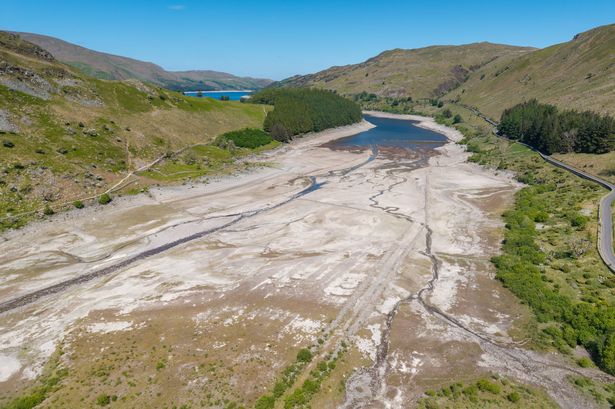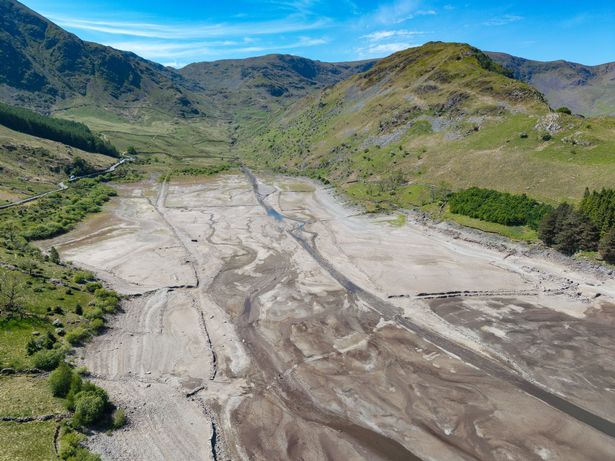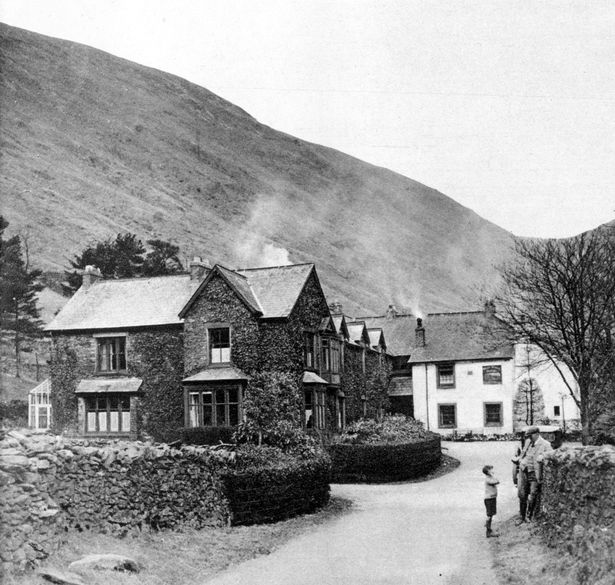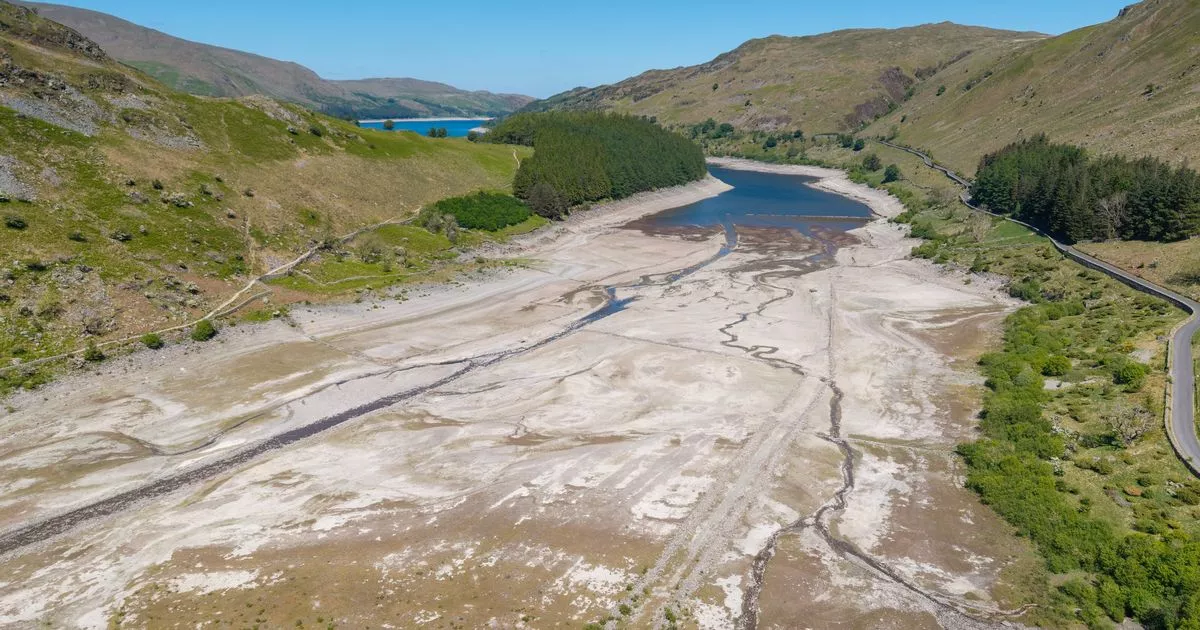The picturesque village was submerged in water during the 1930s The village of Mardale looks set to slowly re-emerge out of the Haweswater reservoir in Cumbria, as the water levels fall, following the record dry spring. Cumbria, UK.(Image: Wayne Hutchinson / SWNS)
The village of Mardale looks set to slowly re-emerge out of the Haweswater reservoir in Cumbria, as the water levels fall, following the record dry spring. Cumbria, UK.(Image: Wayne Hutchinson / SWNS)
A village which was deliberately flooded to make a reservoir has re-emerged due to the lack of rain fall.
Mardale Green in the Lake District disappeared in 1939 after the nearby Haweswater valley was intentionally flooded to create a structure to provide water for the north-west of England.
It became one of the largest reservoirs in the country, supplying Manchester with drinking water for decades.
But because of a lack of rain fall, the reservoir – which has the capacity for about 85,000 million litres of water – is now around 30% lower than it should be at this time of year.
And shocking photos show that the village has re-emerged due to the lack of rain fall.
 The village of Mardale looks set to slowly re-emerge out of the Haweswater reservoir in Cumbria, as the water levels fall, following the record dry spring. Cumbria, UK.(Image: Wayne Hutchinson / SWNS)
The village of Mardale looks set to slowly re-emerge out of the Haweswater reservoir in Cumbria, as the water levels fall, following the record dry spring. Cumbria, UK.(Image: Wayne Hutchinson / SWNS)
An Environment Agency spokesperson said: “This May has seen a continuation of the dry weather and low rainfall across England.
“With little rainfall during the first part of the month, this continues to impact on public water supply reservoirs in central and northern England.”
According to the Met Office, this spring is so far currently ranking at the driest spring in over a century.
Before it was turned into a reservoir, the residents of Mardale Green were forced to move out of their homes and bodies in the local church graveyard were exhumed and were reburied nearby.
The farms and houses of the village were demolished, along with the well-loved Dun Bull Inn.
The Dun Bull Inn, apparently famous for its hot buttered rum, was popular for miles around with farming families and hunting folk who gathered there for fairs, feasts, dances and sales throughout the year.
 The Dun Bull Hotel, a famous Lakeland Inn at Mardale in the Lake District.(Image: PA Images)
The Dun Bull Hotel, a famous Lakeland Inn at Mardale in the Lake District.(Image: PA Images)
The tiny Mardale Church, with seating for 50 or less, held its last service in August 1935.
At the service, the Bishop of Carlisle spoke to the 72 people crammed inside a tiny church, while outside hundreds stood in the fields and listened as the service was relayed over loudspeakers.
Renowned fell-walker, Alfred Wainwright, is said to have protested bitterly about the loss of Mardale, having first visited the village in 1930. In his last book Wainwright in the Valleys of Lakeland (1996) he wrote pointedly of the “rape of Mardale.”
During times of drought, the remnants of Mardale Green – including dry stone walls and an old bridge – can become visible.
The last time the village showed itself was in July 2022, when a drought – similar to the one experienced in recent weeks – hit and water levels plunged.
Mardale Green isn’t the only village close to Greater Manchester to have been sacrificed to supply water.
In the Peak District, the abandoned villages of Derwent and Ashopton were deliberately flooded in the early 1940s to create the Ladybower reservoir.
